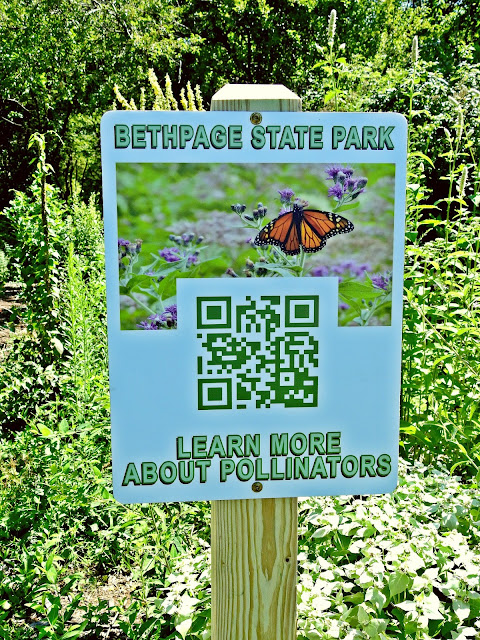The New Neighbors You Can Get To Know --- Welcome Spring Migrants!
Warblers are a favorite spring migrant. Over three dozen warbler species can be observed in New York. The warbler shown above is a Black-and-White Warbler (Mniotilta varia).
Greetings everyone. I'm hoping that this post finds our park patrons and blog visitors safe and well. While social distancing has been at the forefront of all our minds lately, I want to redirect our focus towards something that could give us a greater sense of closeness. What if I told you there is actually a select group of neighbors you can get to know today? Not neighbors of the human-kind but the avian-kind! Yes, I'm talking about the birds that are new to the area...the feathered visitors that traveled to be here for the arrival of spring!
Just as they do every year, spring birds are coming to town. Since we live in the Northern Hemisphere, many of these visitors have traveled hundreds of miles from southern habitats, even as far as the tropics. This journey is made to take advantage of the all that is promised during our warmer months; longer day length, copious insects to forage on and the new budding of flowers and leaves. Simply put, migratory species arrive for the access to resources (food, shelter, and nesting habitat). This also explains why they do not stay the whole year through (they leave when resources become scarce).
However, not all birds migrate. Some birds stay year round and have adaptations to cope with seasonal changes. Ornithologists refer to this group of birds as resident or sedentary species: some examples include Northern Cardinals, Blue Jays and American Robbins. While you might be more familiar with those birds...let us, instead, welcome the newcomers and learn how to identify them!
A male oriole at the forest's edge, closest to our Picnic Pollinator Garden at Bethpage State Park.
An iconic sign that spring is here is the sighting of a Baltimore Oriole (Icterus galbula). This species of blackbird prefers perching in trees near open spaces (forest edges, parks and backyards). Their plumage is a stunning black and orange, making these birds super easy to identify. Orioles also standout because of their unique hanging nests. These structures are built of intricately woven fibers. Orioles feed on insects as well as the ripest fruits. If you want to attract these birds to your yard, make sure to plant cherry and apple trees. You can even put out orange slices to attract them to your feeders.
Scarlet Tanager
Nothing is more exciting than seeing a Scarlet Tanager for the first time! I had the opportunity to photograph this impressive bird at Bethpage State Park (just before the PGA) last spring.
Did you know that the Northern Cardinal is not the only red bird in town? Behold, the Scarlet Tanager (Piranga olivacea)! A long-distance migrant, this bird travels from as far as Central and South America to breed in our area. For that reason, Scarlet Tanagers are often seen in May. Bright red with black wings, the males are a striking sight when against a backdrop of green tree canopy. While these songbirds do prefer oak forests, your backyard could be the wildlife corridor a Scarlet Tanager needs to get there...especially if you have berry trees and orange slices out for food.
Eastern Bluebird

The Eastern Bluebird is the New York State Bird.
Eastern bluebirds (Sialia sialis) are "sometimes" migrants. If winter is mild and food is found, bluebirds will be sedentary species that year. If they do overwinter further south, bluebirds are one of the first species to be back in April. Keep an eye out for these majestic blue beauties. Males are a royal blue with rusty-brown throats and chests. Females have a similar pattern but are of a grayer tint. At Bethpage State Park, we have 45 nest boxes installed to encourage breeding. Bluebird habitats are not just fields and golf courses. If you live in suburban Long Island, you could spot them in backyard tree cavities, especially if there is limited ground cover. To increase your sightings, check out Wildbirds Unlimited and install your own Bluebird nest box!
Yellow-rumped warblers are a widespread, migratory species. They have been seen in every state in the United States!
The yellow-rumped warbler (Setophaga coronaga) is aptly named! Look for that yellow patch because the rest of the bird is mostly black and white. Believe it or not, there are different forms of yellow-rumped warblers in North America. The individual shown above is the "Myrtle subspecies", known for it's preference for wax-myrtle berries. During the spring, however, you will most likely catch it feeding on insects. The yellow-rumped warbler has great agility. This is helpful for catching a variety of prey mid-air. Backyard shrubs are a good place to look for this bird and if you see one, others may be close by (they travel in flocks).







Comments
Post a Comment